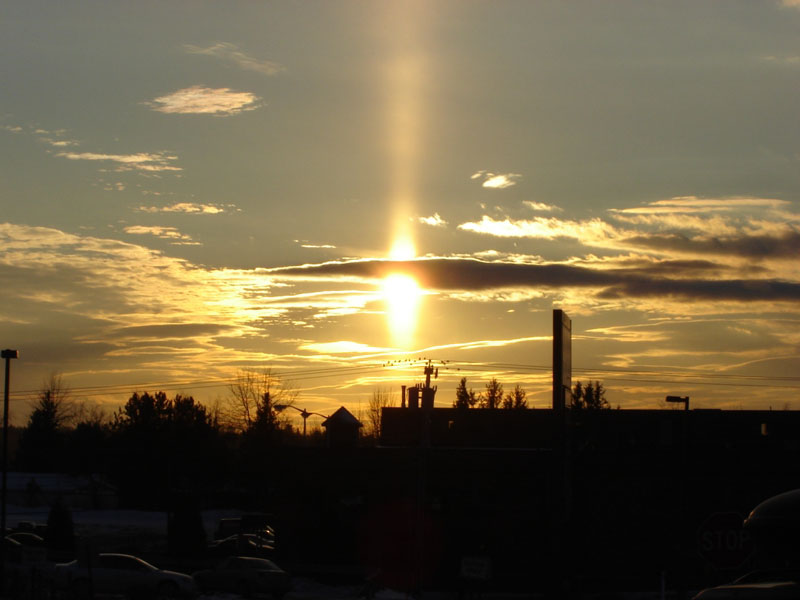
|
Credit & Copyright: Lucy Orloski
Explanation:
Have you ever seen a sun pillar?
When the air is cold and the Sun is rising or
setting, falling ice
crystals
can reflect sunlight and create an
unusual column of light.
Ice sometimes forms flat, stop-sign
shaped crystals as it falls from high-level
clouds.
Air resistance causes these crystals to lie nearly
flat much of the time as they flutter to the ground.
Sunlight reflects off crystals that are
properly aligned,
creating the sun-pillar effect.
In the above picture taken late last month, a
sun-pillar reflects light from a Sun setting over
Bangor, Maine,
USA.
|
January February March April May June July August September October November December |
| |||||||||||||||||||||||||||||||||||||||||||||||||||||||
NASA Web Site Statements, Warnings, and Disclaimers
NASA Official: Jay Norris. Specific rights apply.
A service of: LHEA at NASA / GSFC
& Michigan Tech. U.
Based on Astronomy Picture
Of the Day
Publications with keywords: Sun - Sun Pillar
Publications with words: Sun - Sun Pillar
See also:
- APOD: 2025 May 21 Á International Space Station Crosses the Sun
- APOD: 2025 March 16 Á Venus and the Triply Ultraviolet Sun
- APOD: 2024 September 2 Á A Triangular Prominence Hovers Over the Sun
- APOD: 2024 August 18 Á A Solar Prominence Eruption from SDO
- APOD: 2024 August 4 Á Gaia: Here Comes the Sun
- APOD: 2024 July 28 Á Sun Dance
- Prominences and Filaments on the Active Sun
